Primary maths tutoring programmes
Address gaps and boost confidence with AI tutor Skye, the primary maths tutor built by teachers
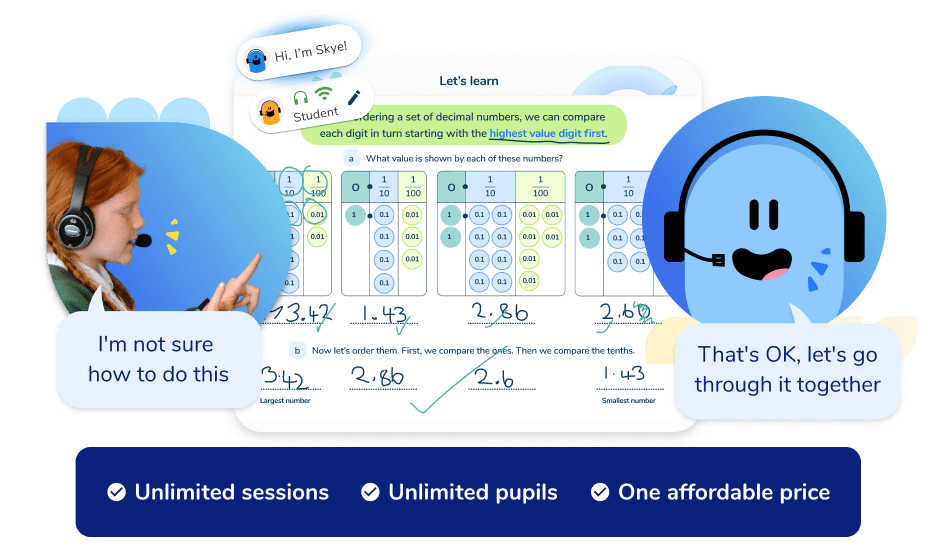
Online one-to-one maths tutoring for Years 4-6
Voice-based conversational primary maths teaching
Unlimited time with a primary maths tutor from just £3,500 per school per year
A range of programmes to secure KS2 maths content
Includes dedicated SATs revision programme for Year 6
Flexible scheduling to suit your timetable
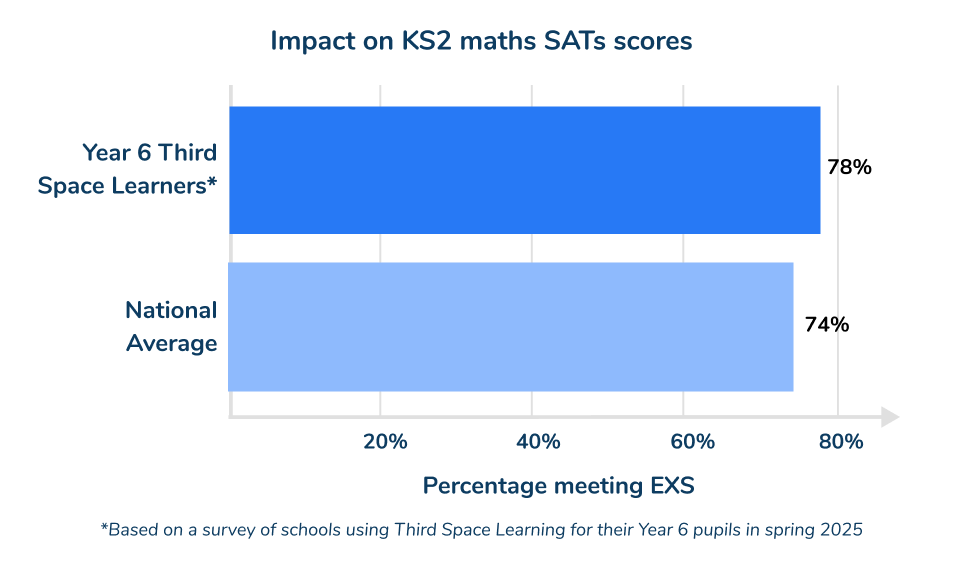
“We used AI maths tutor Skye in the lead up to SATs this year. 93% of our Year 6 Third Space Learning pupils reached the expected level in their 2025 maths SATs.
One child who had been struggling with maths attained at greater depth with a scaled score of 110.
The AI tutoring is a low-cost, flexible way to get more pupils into the programme. Now, we’re no longer limited as to how many pupils get to experience one-to-one tutoring.”

Deb Harris, Assistant Headteacher
Wormley CofE Primary School, Hertfordshire
How primary maths tutoring works with Skye
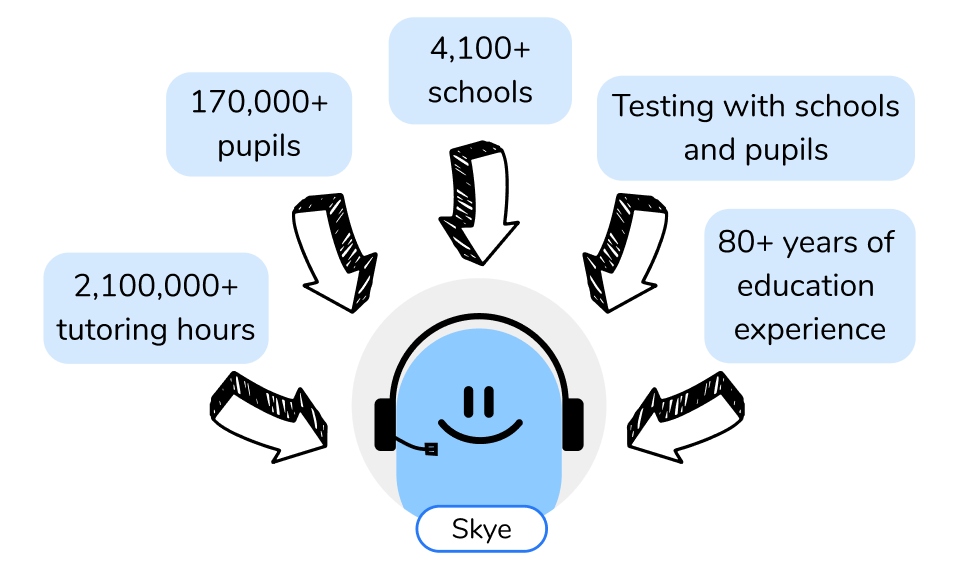
Drawing on insights from 12 years of school-based tutoring and feedback from primary school teachers, we’ve built Skye to teach just like a primary education specialist, but for a fraction of the cost.
Skye is not a generic chatbot, it’s engaging primary maths tutoring on a deeper level. Students learn through spoken, two-way conversation, talking through primary maths problems out loud while Skye, their AI tutor, listens and responds.
How it works in schools like yoursFlexible primary maths tutoring programmes
A range of AI programmes to align with intervention goals:
Strand-specific maths programmes across Years 4-6
Year 6 SATs Booster programme to work through maths SATs-style questions
Year 5 Top 20 to secure understanding of top Year 5 maths concepts
Re-order lessons to align with maths teaching goals:
Pre-teaching
Aligning with class teaching
Revisiting concepts
Prioritising individual gaps
Year 3 Number and Place Value
Coming soon
Year 3 Number and Place Value
Learning objectives in this programme
All programmes begin with a diagnostic assessment to identify gaps
Year 4 Number and Place Value
View lessons
Year 4 Number and Place Value
Learning objectives in this programme
Each Learning Objective provides opportunities for concept review, guided practice, independent practice and challenge
Comparing numbers up to 1,000
Adding and subtracting 10s or 100s
Using place value charts to multiply and divide by 10
Knowing the value of each digit in numbers up to 10,000
Adding and subtracting multiples of 10 up to 1,000
Multiplying and dividing by 10 and 100
Rounding numbers to the nearest 10
Rounding numbers to the nearest 100 and 1,000
Writing tenths as decimals
Writing hundredths as decimals
Showing the position of tenths and hundredths on a number line
Comparing numbers with the same number of decimal places
Rounding decimals to the nearest whole number
Counting in multiples
Negative numbers and counting back through zero
About this programme
This programme covers 15 strategically designed topics that focus on building a strong understanding of essential Year 4 Number and Place Value knowledge.
How are lessons ordered?
The default order has been set by our academic team for the most appropriate sequence of learning as pupils develop skills. Teachers can re-order lessons at any point.
Year 4 Calculations
View lessons
Year 4 Calculations
Learning objectives in this programme
Each Learning Objective provides opportunities for concept review, guided practice, independent practice and challenge
Using the inverse to add and subtract
Using known facts to calculate
Solving balancing sums
Adding and subtracting using rounding and adjusting
Adding 4-digit numbers using the column method
Subtracting 4-digit numbers using the column method
Choosing a mental or written method
Adding money using the column method
Subtracting money using the column method
Finding number pairs that total 1
Solving two-step addition and subtraction problems
Using pictures to show the inverse
Using multiplication and division facts up to 12 x 12
Using doubling and halving to find multiplication facts
Using known facts to work out other multiplication facts
Multiplying using arrays and the area model
Multiplying 3 numbers
Multiplying up to 3-digits using short multiplication
Dividing using partitioning
Multiplying and dividing mentally
Solving real-life problems with remainders
Solving real-life problems with bar models
About this programme
This programme features 22 high-impact topics, each thoughtfully designed to address the key concepts and skills crucial for mastering Year 4 Calculations.
How are lessons ordered?
The default order has been set by our academic team for the most appropriate sequence of learning as pupils develop skills. Teachers can re-order lessons at any point.
Year 4 Geometry
Coming soon
Year 4 Geometry
Learning objectives in this programme
All programmes begin with a diagnostic assessment to identify gaps
Year 4 Measurement
Coming soon
Year 4 Measurement
Learning objectives in this programme
All programmes begin with a diagnostic assessment to identify gaps
Year 4 Fractions
Coming soon
Year 4 Fractions
Learning objectives in this programme
All programmes begin with a diagnostic assessment to identify gaps
Year 5 Top 20
View lessons
Year 5 Top 20
Learning objectives in this programme
Each Learning Objective provides opportunities for concept review, guided practice, independent practice and challenge
Showing and partitioning numbers up to 10,000
Ordering numbers up to 1,000,000
Rounding numbers to the nearest 10,000 and 100,000
Writing tenths as decimals
Writing hundredths as decimals
Knowing the value of each digit in numbers with up to 2 decimal places
Multiplying and dividing whole numbers and decimals by 10 and 100
Converting between units of measure
Using fact families to multiply and divide
Counting in multiples
Multiplying up to 3-digits using short multiplication
Using known facts to find factors
Solving real-life problems with remainders
Rounding decimals to the nearest whole number
Understanding fractions greater than 1
Finding equivalent fractions using a number line
Finding fractions of an amount
Dividing using short division
Adding and subtracting decimals using known facts
Calculating areas
About this programme
This programme features 20 high-impact topics, each carefully designed to address the key concepts and skills crucial for mastering the most significant Year 5 expectations.
How are lessons ordered?
The default order has been set by our academic team for the most appropriate sequence of learning as pupils develop skills. Teachers can re-order lessons at any point.
Year 5 Number and Place Value
View lessons
Year 5 Number and Place Value
Learning objectives in this programme
Each Learning Objective provides opportunities for concept review, guided practice, independent practice and challenge
Knowing the value of each digit in numbers up to 1,000,000
Ordering numbers up to 1,000,000
Rounding numbers to the nearest 10,000 and 100,000
Adding and subtracting multiples of 10 up to 100,000
Counting back from zero
Knowing the value of each digit in numbers with up to 2 decimal places
Partitioning in different ways with decimals
Comparing numbers with up to 2 decimal places using money
Ordering numbers with up to 2 decimal places
Estimating the position of tenths and hundredths on a number line
Multiplying and dividing whole numbers and decimals by 10 and 100
Rounding numbers to the nearest tenth
Adding or subtracting tenths or hundredths
Finding multiples
Finding factors
Finding common factors of two numbers
Finding square numbers
Finding prime numbers
Finding cube numbers
About this programme
This programme features 19 high-impact topics, each thoughtfully designed to address the key concepts and skills crucial for mastering Year 5 Number and Place Value.
How are lessons ordered?
The default order has been set by our academic team for the most appropriate sequence of learning as pupils develop skills. Teachers can re-order lessons at any point.
Year 5 Calculations
View lessons
Year 5 Calculations
Learning objectives in this programme
Each Learning Objective provides opportunities for concept review, guided practice, independent practice and challenge
Adding numbers mentally using the same sum method
Using the same difference method for whole numbers and decimals
Adding numbers mentally using near doubles
Counting on to add and subtract mentally
Adding and subtracting decimals using known facts
Adding and subtracting whole numbers and decimals using the inverse
Adding decimals using the column method
Subtracting decimals using the column method
Solving multi-step addition and subtraction problems
Multiplying numbers by multiples of 10 and 100
Multiplying and dividing decimals using known facts
Multiplying mentally using factors
Dividing mentally using factors
Multiplying 2-digit numbers using the area model
Multiplying using short multiplication
Multiplying 2-digit numbers using long multiplication
Dividing using short division
Dividing using short division with exchange
Solving problems involving remainders
About this programme
This programme features 19 high-impact topics, each thoughtfully designed to address the key concepts and skills crucial for mastering Year 5 Calculations.
How are lessons ordered?
The default order has been set by our academic team for the most appropriate sequence of learning as pupils develop skills. Teachers can re-order lessons at any point.
Year 5 Geometry
Coming soon
Year 5 Geometry
Learning objectives in this programme
All programmes begin with a diagnostic assessment to identify gaps
Year 5 Measurement
Coming soon
Year 5 Measurement
Learning objectives in this programme
All programmes begin with a diagnostic assessment to identify gaps
Year 5 Fractions
Coming soon
Year 5 Fractions
Learning objectives in this programme
All programmes begin with a diagnostic assessment to identify gaps
Year 6 SATs Booster
View lessons
Year 6 SATs Booster
Learning objectives in this programme
Each Learning Objective provides opportunities for concept review, guided practice, independent practice and challenge
Developing Fluency with Addition and Subtraction: Rounding and Adjusting
Developing Fluency with Addition and Subtraction: Counting On to Find the Difference
Developing Fluency with Addition and Subtraction: Using the Inverse
Reasoning with Addition and Subtraction: Finding the Difference
Reasoning with Addition and Subtraction: Using the Inverse to Find Missing Numbers
Reasoning with Addition and Subtraction: Multi-Step Problems
Reasoning with Money: Working Out Change from Single Items
Reasoning with Money: Buying Multiple Items on Offer
Reasoning with Money: Working Out Change from Multiple Items
Developing Fluency with Multiplication and Division: Using Known Facts
Developing Fluency with Multiplication and Division: Formal Multiplication
Developing Fluency with Multiplication and Division: Formal Division
Reasoning with Multiplication and Division Facts: Missing Number Problems
Reasoning with Multiplication and Division Facts: Using Mental Division Strategies
Reasoning with Multiplication and Division Facts: Multiplying and Dividing by 10, 100 and 1,000
Reasoning with Multiples, Factors and Prime Numbers: Identifying Multiples using Venn Diagrams
Reasoning with Multiples, Factors and Prime Numbers: Identifying Prime Numbers, Factors, Multiples and Square Numbers
Reasoning with Multiples, Factors and Prime Numbers: Solving Problems with Cube Numbers and Square Numbers
Reasoning with Place Value: Digit value in 7-digit Numbers
Reasoning with Place Value: Solving Place Value Problems with Clues
Reasoning with Place Value: Solving Scaling Problems
Reasoning with Rounding: Nearest 1,000 or 10,000
Reasoning with Rounding: Nearest Whole Number and One and Two Decimal places
Reasoning with Rounding: Nearest Tenth and Hundredth in Context
Reasoning with Solving Multiplication and Division Problems: Finding Missing Digits in a Long Multiplication
Reasoning with Solving Multiplication and Division Problems: Using Division to Solve Real-Life Problems
Reasoning with Solving Multiplication and Division Problems: Solving Multi-Step Problems
Reasoning with Algebra: One and Two-Step Equations
Reasoning with Algebra: Using a Given Formula
Reasoning with Algebra: Forming Equations to Solve Real-Life Problems
Reasoning with Data and Averages: Finding the Mean of a Set of Values
Reasoning with Data and Averages: Finding the Mean of a Set of Decimal Values
Reasoning with Data and Averages: Finding a Missing Value
Developing Fluency with Calculating with Fractions: Adding and Subtracting Fractions
Developing Fluency with Calculating with Fractions: Multiplying Fractions by Whole Numbers and Fractions
Developing Fluency with Calculating with Fractions: Dividing Fractions by Whole Numbers
Reasoning with Equivalent Fractions: Finding Equivalent Fractions with Diagrams
Reasoning with Equivalent Fractions: Finding Missing Numbers
Reasoning with Equivalent Fractions: Simplifying Tenths and Hundredths
Reasoning with Percentages of Amounts: Solving One-Step Percentage Problems
Reasoning with Percentages of Amounts: Solving Two-Step Percentage Problems
Reasoning with Percentages of Amounts: Using Complements to 100
Developing Fluency with Decimal Calculations: Adding and Subtracting Decimals
Developing Fluency with Decimal Calculations: Multiplying and Dividing by 10, 100 and 1,000
Developing Fluency with Decimal Calculations: Multiplying Decimals by Whole Numbers
Reasoning with Solving Problems using Mixed Operations: Multi-Step Problems using Multiplication Facts and Subtraction
Reasoning with Solving Problems using Mixed Operations: Multi-Step Measure Problems using Division and Subtraction
Reasoning with Solving Problems using Mixed Operations: Multi-Step Money Problems using Division and Subtraction
Reasoning with Angles: Acute, Obtuse and Right-angles
Reasoning with Angles: Properties and Angles of Different Triangles
Reasoning with Angles: Finding Missing Angles
Reasoning with Time: Converting between Analogue and Digital Time
Reasoning with Time: Converting between Different Measures of Time
Reasoning with Time: Solving Time Problems
Reasoning with Negative Numbers: Ordering Temperatures
Reasoning with Negative Numbers: Negative Numbers in Context
Reasoning with Negative Numbers: Ordering Number Sequences
Reasoning with Fractions, Decimals and Percentages: Comparing Fractions and Decimals
Reasoning with Fractions, Decimals and Percentages: Matching Fractions and Decimals to Percentages
Reasoning with Fractions, Decimals and Percentages: Comparing Fractions, Decimals and Percentages in a Problem
About this programme
This programme covers 60 high-impact SATs-style fluency and reasoning lessons identified through yearly analysis of SATs past papers. Through SATs-style questions, students develop fluency, accuracy, and confidence with key SATs skills.
How are lessons ordered?
The default order has been set by our academic team for the most appropriate sequence of learning as pupils develop skills. Teachers can re-order lessons at any point.
Year 6 Number and Place Value
View lessons
Year 6 Number and Place Value
Learning objectives in this programme
Each Learning Objective provides opportunities for concept review, guided practice, independent practice and challenge
Knowing the value of each digit in numbers up to 10,000,000
Partitioning numbers up to 10,000,000
Ordering numbers up to 10,000,000
Adding and subtracting multiples of 10
Rounding any whole number
Understanding scaling within place value
Writing thousandths as decimals
Knowing the value of each digit in numbers with up to 3 decimal places
Comparing and ordering numbers with up to 3 decimal places
Finding and estimating the position of decimals on a number line
Rounding numbers to 2 decimal places
Finding common multiples
Finding common factors
Finding prime factors
Using a number line to calculate across zero
About this programme
This programme features 15 high-impact topics, each thoughtfully designed to address the key concepts and skills crucial for mastering Year 6 Number and Place Value.
How are lessons ordered?
The default order has been set by our academic team for the most appropriate sequence of learning as pupils develop skills. Teachers can re-order lessons at any point.
Year 6 Calculations
View lessons
Year 6 Calculations
Learning objectives in this programme
Each Learning Objective provides opportunities for concept review, guided practice, independent practice and challenge
Using mental methods to add and subtract whole numbers and decimals
Using the inverse between addition and subtraction
Adding whole numbers and decimals using the column method
Subtracting whole numbers and decimals using the column method
Subtracting numbers using the same difference method
Using estimation to check answers to calculations
Using the bar model to solve multi-step problems
Using mental strategies to multiply
Using mental strategies to divide
Multiplying decimals using short multiplication
Dividing using short division giving remainders as decimals
Dividing decimals using short division
Multiplying using the expanded method of long multiplication
Multiplying using long multiplication
Dividing using long division
Solving mixed multiplication and division problems
Using BIDMAS to solve calculations
About this programme
This programme features 17 high-impact topics, each thoughtfully designed to address the key concepts and skills crucial for mastering Year 6 Calculations.
How are lessons ordered?
The default order has been set by our academic team for the most appropriate sequence of learning as pupils develop skills. Teachers can re-order lessons at any point.
Year 6 Fractions
View lessons
Year 6 Fractions
Learning objectives in this programme
Each Learning Objective provides opportunities for concept review, guided practice, independent practice and challenge
Comparing fractions using reasoning
Comparing and ordering fractions
Simplifying fractions by finding common factors
Using fractions to solve measure problems
Adding and subtracting fractions including mixed numbers
Multiplying two fractions
Dividing fractions by a whole number
Finding percentages of amounts
About this programme
The programme covers 8 high-impact fraction topics, each carefully designed to secure understanding of fractions, and learn and strengthen skills in calculating with fractions and percentages.
How are lessons ordered?
The default order has been set by our academic team for the most appropriate sequence of learning as pupils develop skills. Teachers can re-order lessons at any point.
Year 6 Geometry
Coming soon
Year 6 Geometry
Learning objectives in this programme
All programmes begin with a diagnostic assessment to identify gaps
Year 6 Measurement
Coming soon
Year 6 Measurement
Learning objectives in this programme
All programmes begin with a diagnostic assessment to identify gaps
Watch a Year 6 SATs maths session in action
Watch Year 5 primary maths tutoring in action
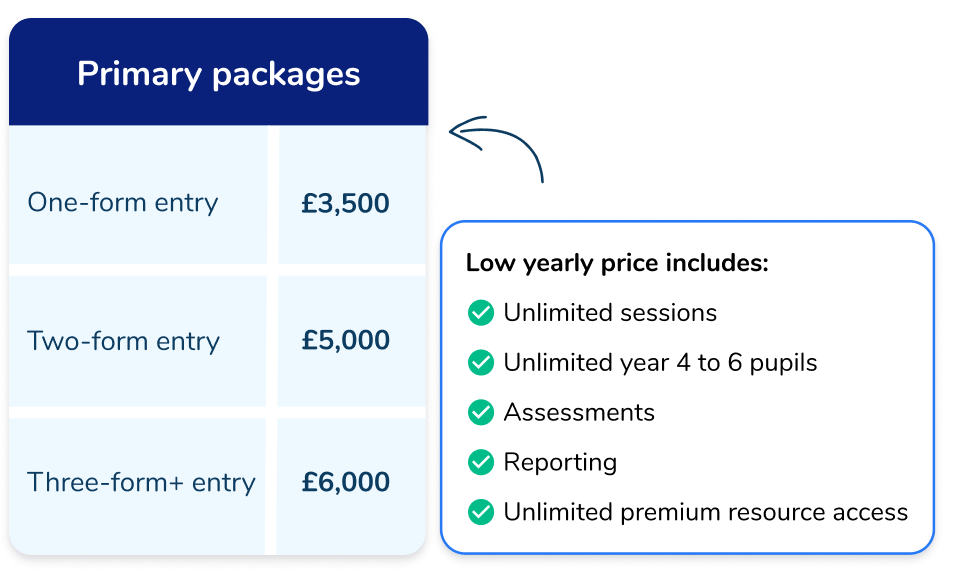
Low-cost one-to-one support for every Year 4-6 pupil who needs it
With Skye, you can run as many one-to-one maths sessions as you need for one low fixed cost.
If you find more students need support as you go through the year, you won’t need to find space in the budget or need to take other students off the programme.
A two-form entry primary school will save an average of 90% vs traditional one-to-one primary tutors.
“We’ve used Third Space Learning for a few years and it has such a strong impact. The AI tutoring with Skye has been a game-changer! It’s allowed us to get more children onto the programme because it’s so affordable and more flexible. It absolutely works.”

David Gooding, Assistant Headteacher
Harrison Primary School, Fareham
Structured, scaffolded lessons from a primary maths tutor
Every lesson is designed by qualified teachers to follow an “I do, we do, you do” structure.
AI tutor Skye has been specifically trained to use this curriculum of primary lessons, teaching maths to address learning gaps, boost maths knowledge, build problem solving skills, deepen understanding, develop confidence and boost progress.
Every lesson starts with a short diagnostic assessment. Skye will skip straight to independent practice if the pupil is ready or guide the pupil through the lesson as normal if not, using formative assessment to identify misconceptions and provide tailored hints.
Year 4 tutoringYear 5 tutoring
Year 6 tutoring
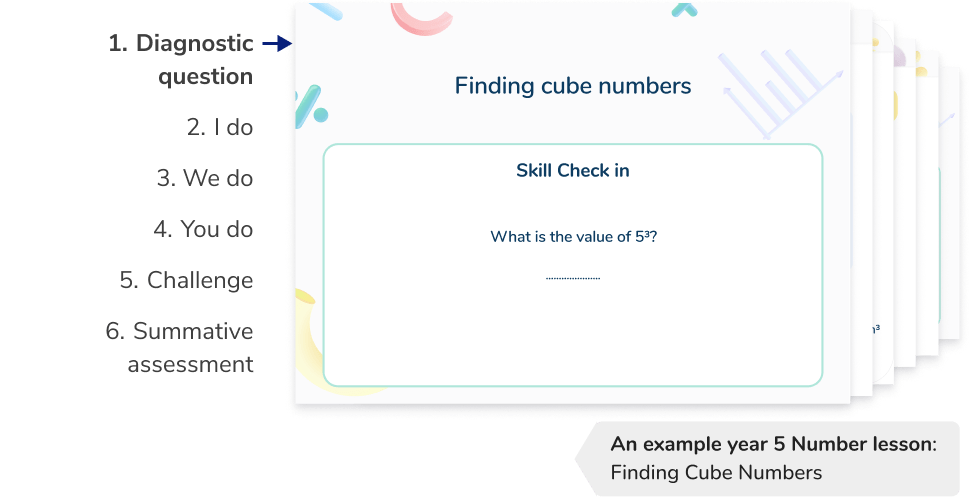
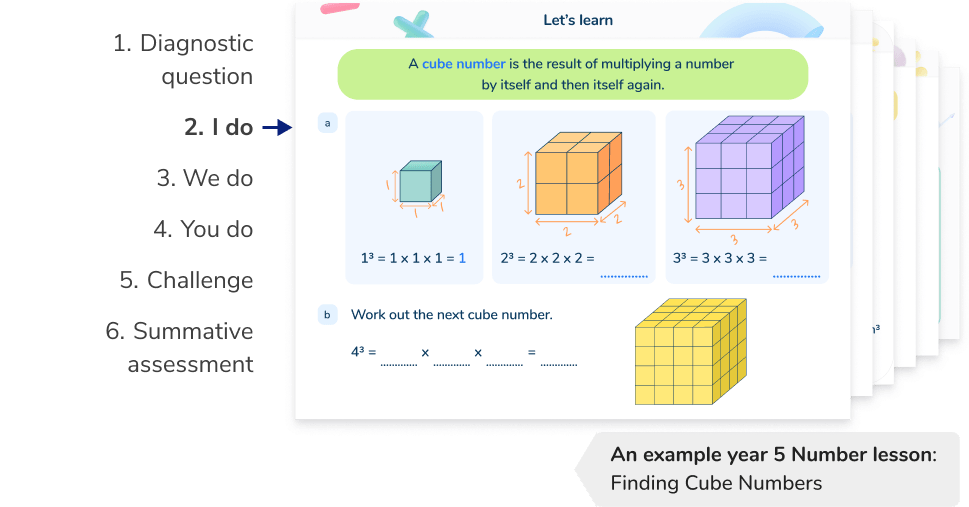
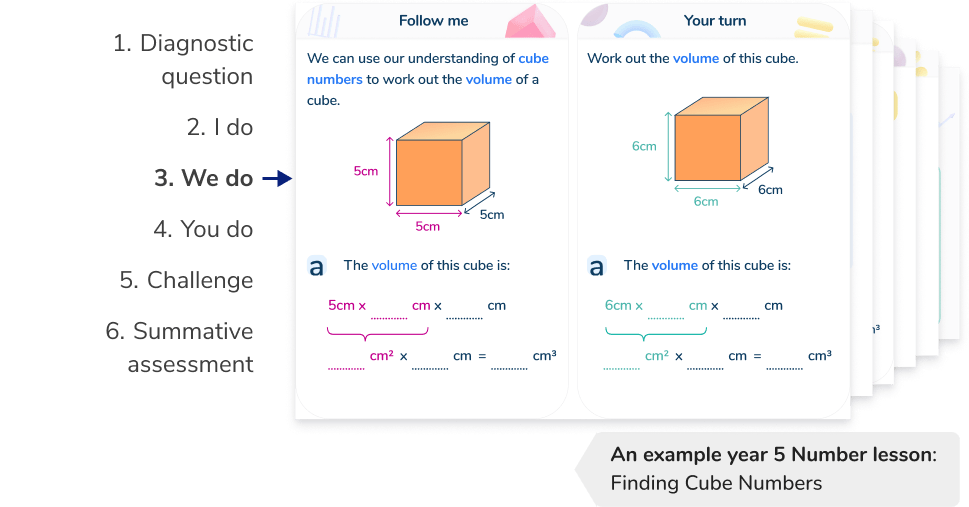
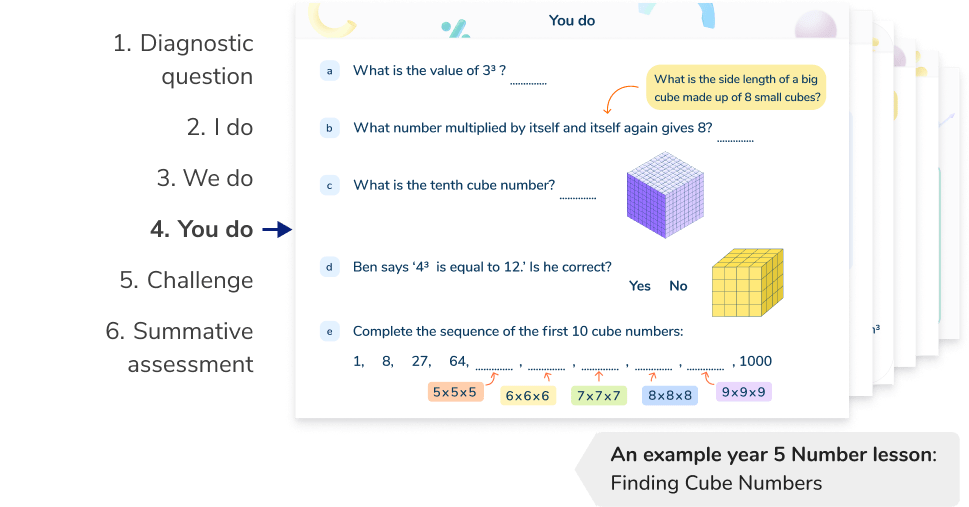
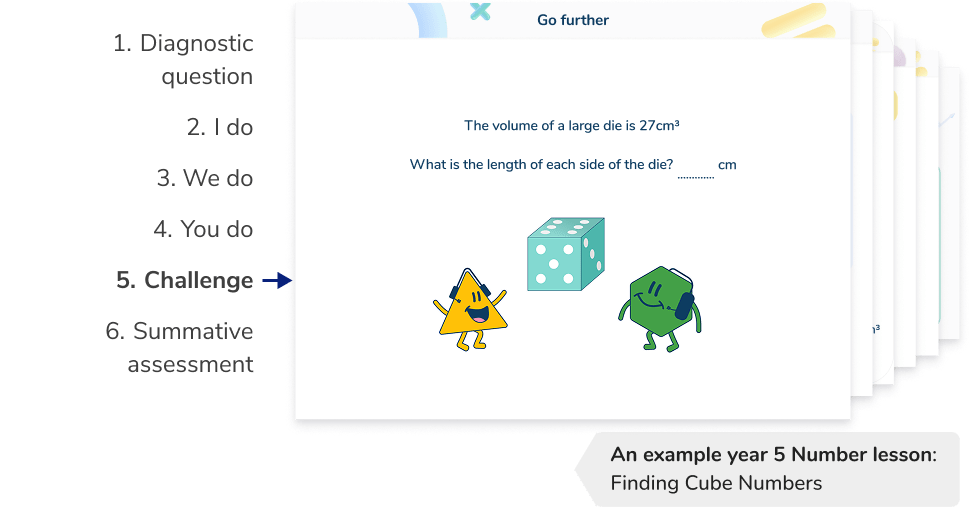
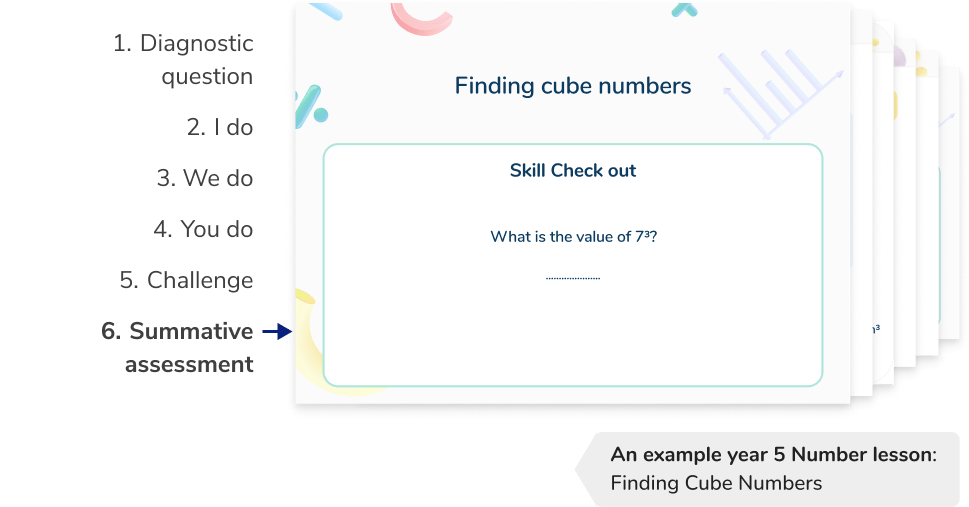
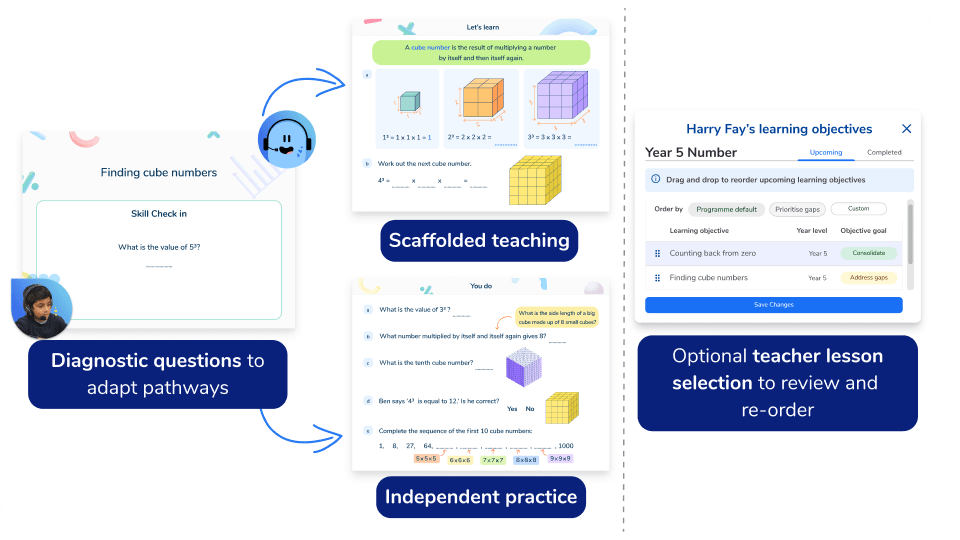
Personalised learning made easy at scale
Skye starts each lesson with an initial assessment to adapt teaching, so as a primary maths tutor it can then address learning gaps or skip straight to independent practice if the child ready.
Teachers can re-order lessons at any point to ensure the tutoring experience aligns with their own intervention and teaching goals.
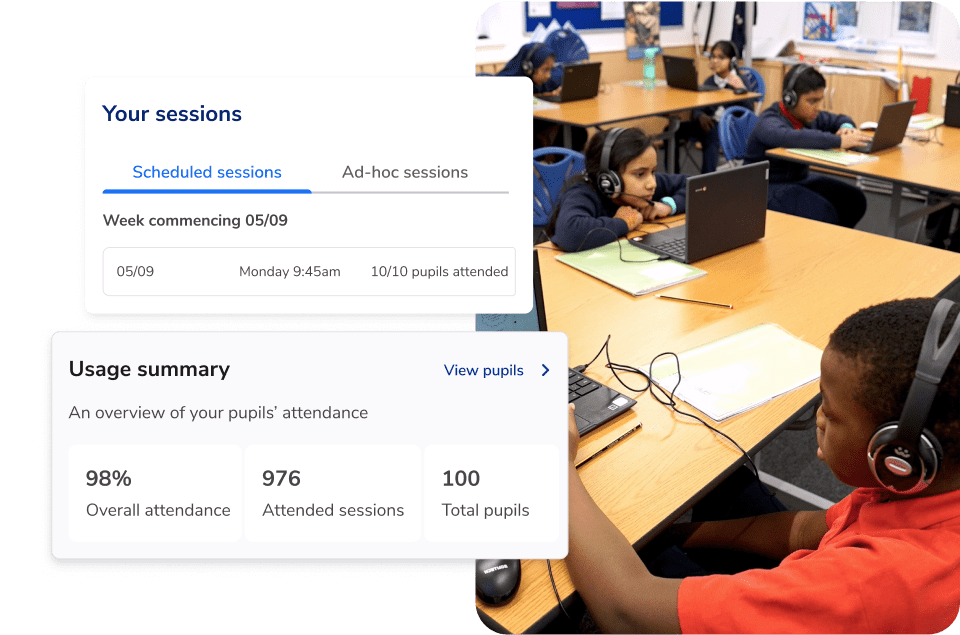
Flexible online maths tuition across your primary school
As well as using Skye for regular, scheduled sessions throughout the year, schools can also use the primary maths tutor:
For extra maths lessons with ad-hoc, on-demand sessions
For more frequent exam practice to boost progress before SATs
For short term cover to address staff shortages or absences
As part of your maths homework approach
As a virtual Teaching Assistant
Keeping pupils safe with Skye
Structured content: Skye can only display primary lessons created by our team; strict guardrails control interactions and ensure discussions are appropriate
Session recordings: All primary maths tutor sessions are recorded and transcribed
Red flag policy: Skye automatically flags safeguarding concerns for review and escalation to primary school teachers
Trusted processes: Safeguarding policies previously approved by the Department for Education as part of the National Tutoring Programme
Structured content: Skye can only display primary lessons created by our team; strict guardrails control interactions and ensure discussions are appropriate
Session recordings: All primary maths tutor sessions are recorded and transcribed
Red flag policy: Skye automatically flags safeguarding concerns for review and escalation to primary school teachers
Trusted processes: Safeguarding policies previously approved by the Department for Education as part of the National Tutoring Programme
Book a free maths tutoring taster for your school
Get in touch today to arrange a free taster session with AI maths tutor Skye. On a quick call, we’ll set everything up so you can see how unlimited maths tutoring can support your primary school:
Trusted by more than 4,100 schools since 2013
Unlimited one-to-one tutoring for one low fixed cost
Developed by maths teachers for maximum academic impact
Built using insights from 2.1 million one to one tutoring sessions in schools
Designed to improve maths SATs scores
You can learn more about how we keep your data safe and secure in our privacy policy.
Want to discuss your pupils’ needs and see how Third Space
Learning can support your school?
Book a demo here.